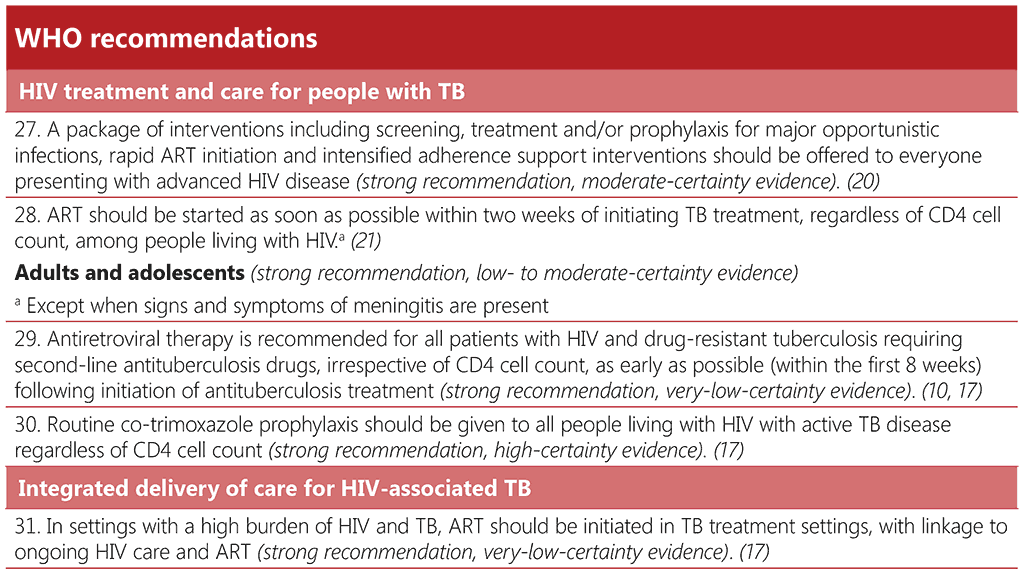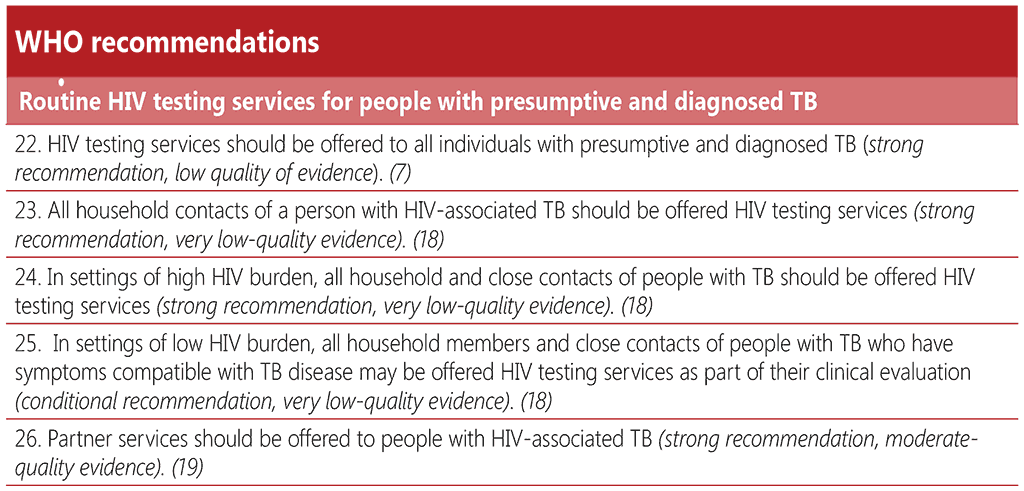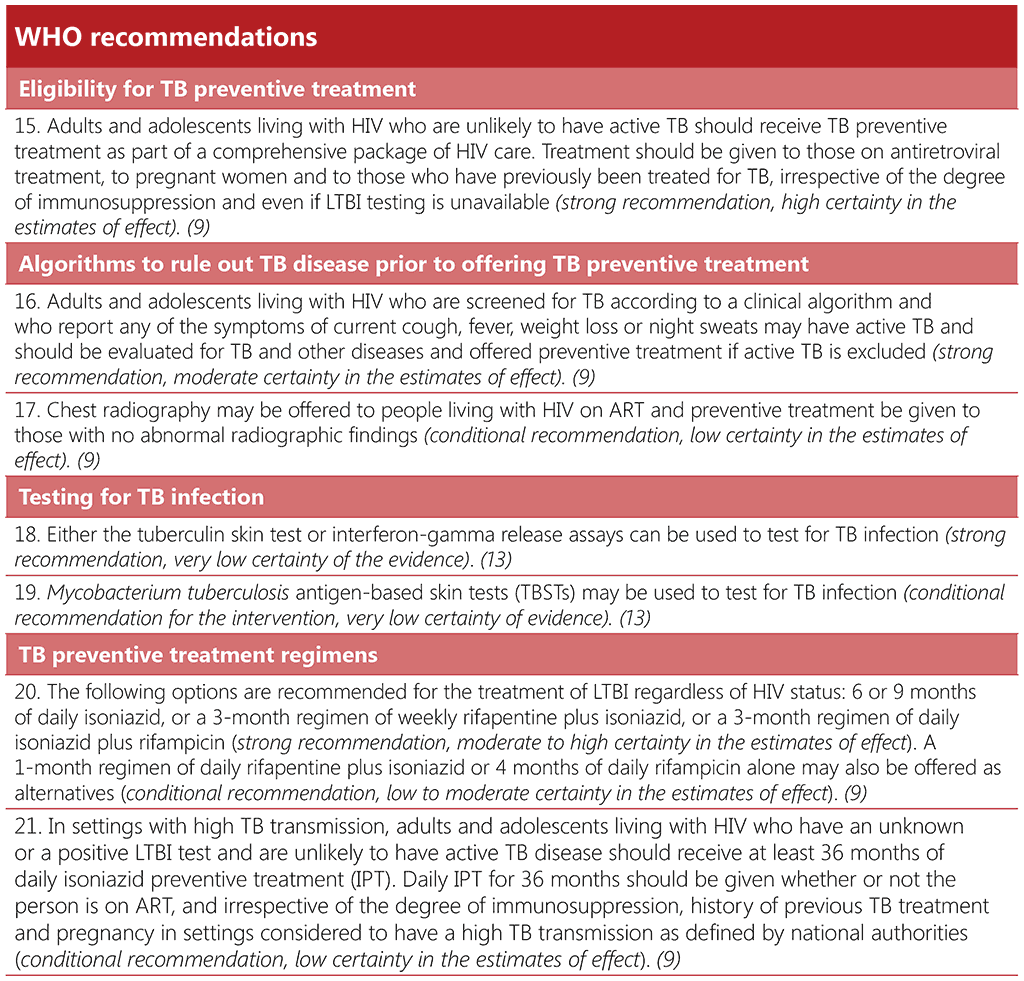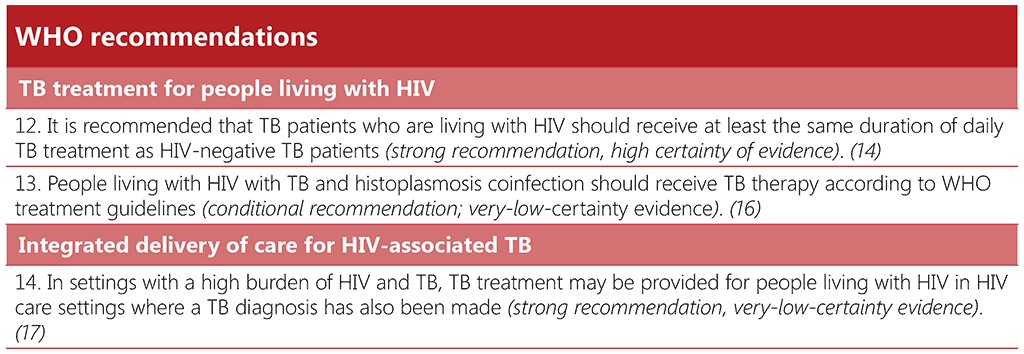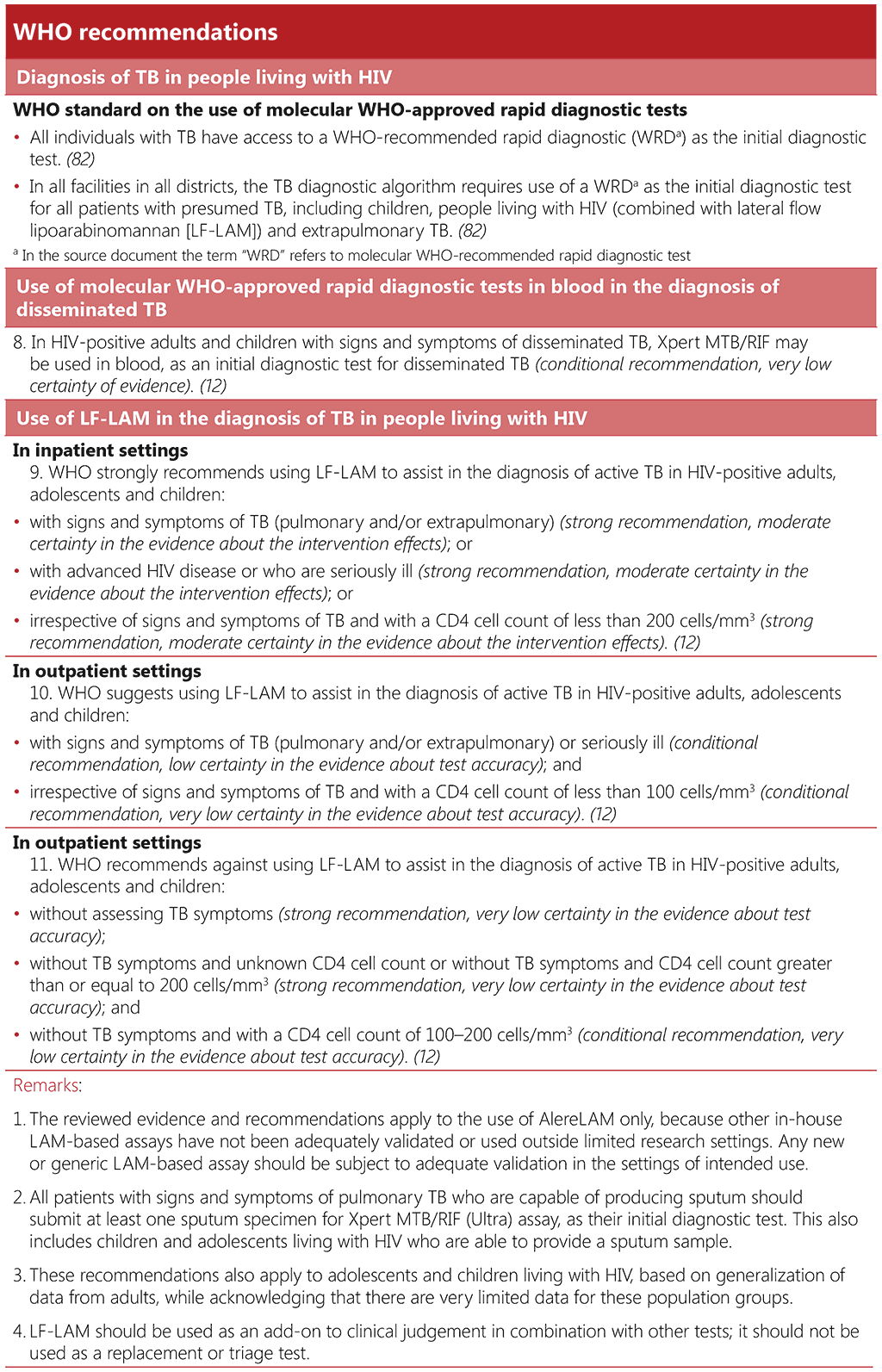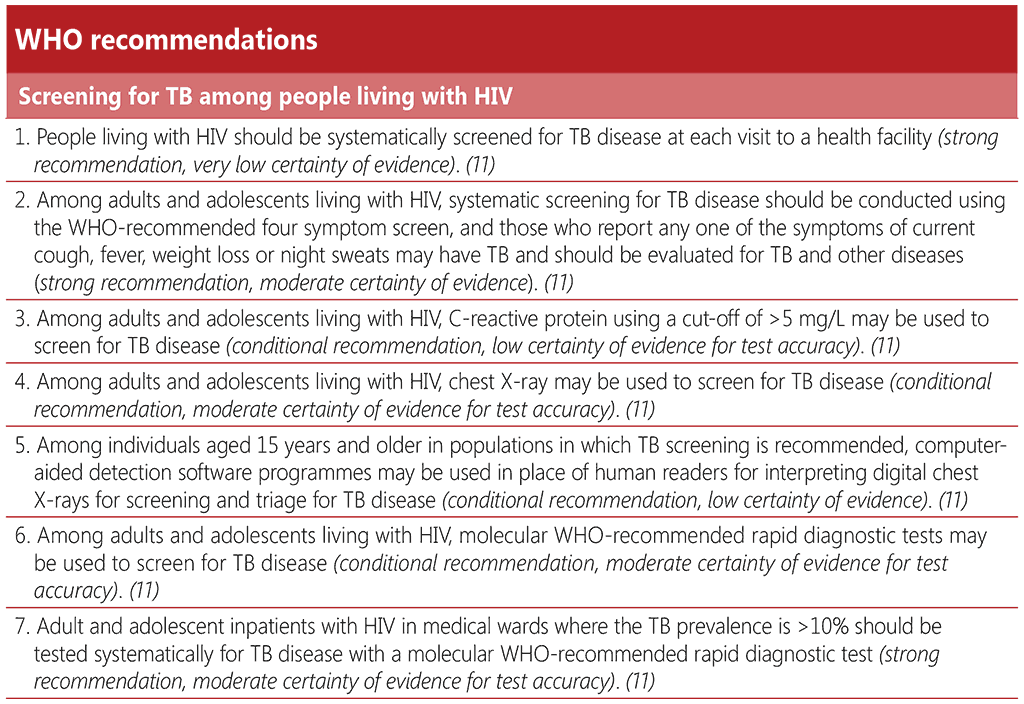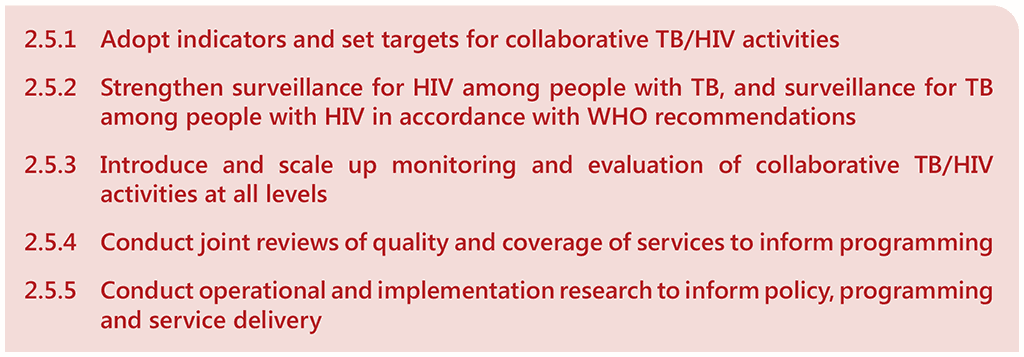4.3 HIV prevention
4.3.1 Combination HIV prevention for people with diagnosed or presumed TB
National TB programmes should implement comprehensive HIV prevention strategies for their clients and their partners, or they should establish community and referral linkages as necessary. HIV preventive interventions by TB programmes or effective referral of people with TB to HIV programmes has been successfully implemented in many countries (162-164).

 Feedback
Feedback